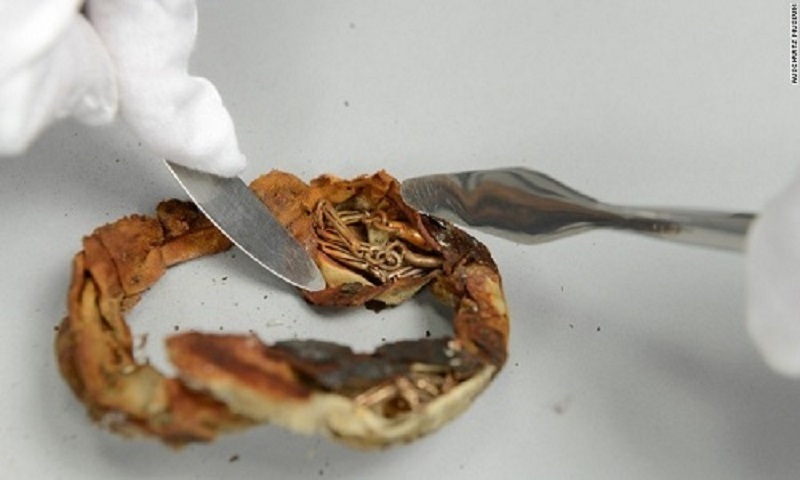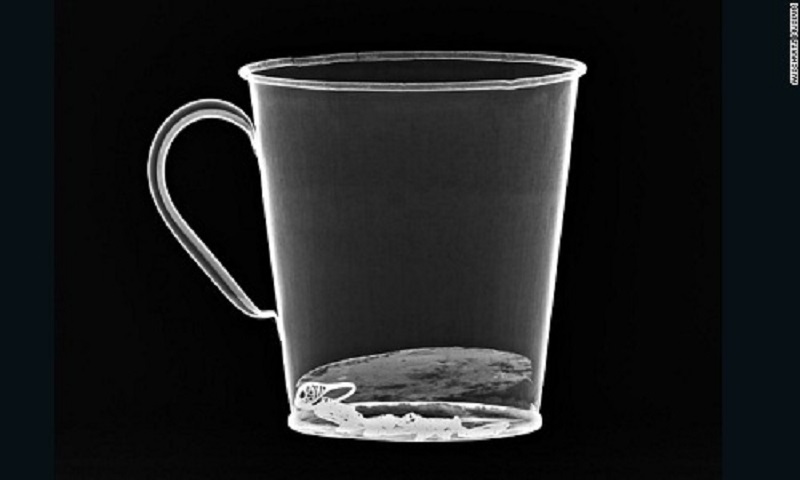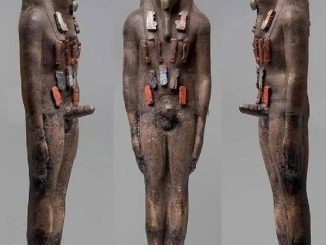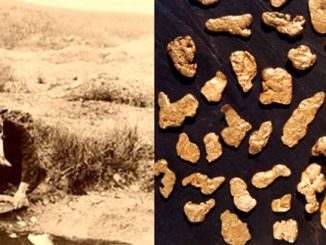Gold rings and necklaces were carefully wrapped in canvas before being hidden under the false bottom of a goblet in the largest concentration camp under the Nazis.

Inspection showed that the gold ring was created in Poland between 1921 and 1931. Photo: Auschwitz Museum.
According to CNN, staff at the Auschwitz Museum in Oświęcim, Poland, found gold rings and necklaces in the false bottom of a cup early last week. They were among the last possessions of a civilian sent to Auschwitz-Birkenau, the largest concentration camp established by Nazi Germany during World War II.

The necklace was carefully wrapped in canvas before being hidden at the bottom of the cup. Photo: Auschwitz Museum.
“The act of hiding valuable objects, on the one hand, shows the vigilance of the victims against the plundering nature of the act of sending them to the concentration camp. On the other hand, it shows that many Jewish families often sacrifice Hopefully they will need these items to survive,” said Piotr Cywinski, museum director.
The Nazis regularly told Jewish victims that they were being sent to concentration camps to resettle and start a new life in their new home. Deportees were allowed to bring a small amount of luggage with them. The Nazis believed that this luggage contained the most valuable assets of the deported families, according to Cywinski.

X-rays showed a ring and gold chain hidden under the false bottom of the cup. Photo: Auschwitz Museum.
The treasure was found while museum staff examined a collection of 12,000 enameled kitchen utensils. According to the museum’s announcement, the ring and necklace will be preserved in a way that reflects the owner’s concealment, to illustrate the fate of the Jewish people deported to concentration camps.


